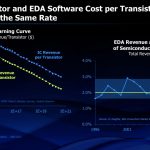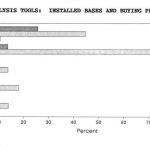You are currently viewing SemiWiki as a guest which gives you limited access to the site. To view blog comments and experience other SemiWiki features you must be a registered member. Registration is fast, simple, and absolutely free so please,
join our community today!
The “20 Questions with Wally Rhines” series continues
Carl Icahn is a remarkably charming person. You might expect him to be a mean, aggressive adversary but he actually jokes about his foibles, tells stories about interesting people and gently poses questions. “I thought Jerry Yang just didn’t want to sell his Yahoo… Read More
The “20 Questions with Wally Rhines” series continues
Throughout the history of the EDA industry, pricing models have caused discontinuities in the way the industry operates. For a variety of competitive reasons, individual companies have developed ways to change the pricing model in an attempt to secure competitive… Read More
This is the nineteenth in the series of “20 Questions with Wally Rhines”
When I moved from the semiconductor industry to Mentor, I expected most of my technology and business experience to apply similarly in EDA software. To some extent, that was correct. But there was a fundamental difference that required a change… Read More
Last month I attended the 2018 U.S. Executive Forum where Wally Rhines was one of the keynotes. I was also lucky enough to have lunch with Wally afterwards and talk about his presentation in more detail and he sent me his slides which are attached to the end of this blog.
The nice thing about Wally’s presentations is that they are not … Read More
This is the sixteenth in the series of “20 Questions with Wally Rhines”
Electronic design automation (EDA) began and grew with the integrated circuit (IC) design business probably because IC design grew in complexity faster than printed circuit boards. The race for superiority in PCB design evolved in parallel,… Read More
This is the fifteenth in the series of “20 Questions with Wally Rhines”
During 1980 and 1981, three companies, Daisy, Mentor and Valid were founded. Daisy and Valid attacked the computer automated design business with custom hardware workstations plus software to provide the unique capabilities required by engineers.… Read More
This is the fourteenth in the series of “20 Questions with Wally Rhines”
I joined Mentor Graphics (now Mentor, A Siemens Business), in late 1993. Tom Engibous, one of my direct reporting people at TI, was promoted to replace me as head of the Semiconductor business of TI and I moved on to what I knew would be a real challenge,… Read More
This is the twelfth in the series of “20 Questions with Wally Rhines”
Among the companies that bought a license from AT&T to produce the transistor was Sony. While the U.S. maintained its lead in technology, other countries like Japan emerged as competitors. Semiconductor manufacturing was both labor intensive… Read More
This is the eleventh in the series of “20 Questions with Wally Rhines”
In high technology, there are numerous instances of highly productive groups coming together and generating game-changing ideas and products. This happened at Shockley Semiconductor in the 1960s when Gordon Moore, Bob Noyce, Jean Hoerni and… Read More
Speak N Spellby Daniel Nenni on 08-03-2018 at 7:00 amCategories: Wally Rhines
This is the ninth in the series of “20 Questions with Wally Rhines”
Success has many authors and the Speak & Spell product from Texas Instruments generated lots of write-ups to demonstrate this. For most of the semiconductor industry, results of innovation were not apparent to the masses but, for the consumer … Read More











